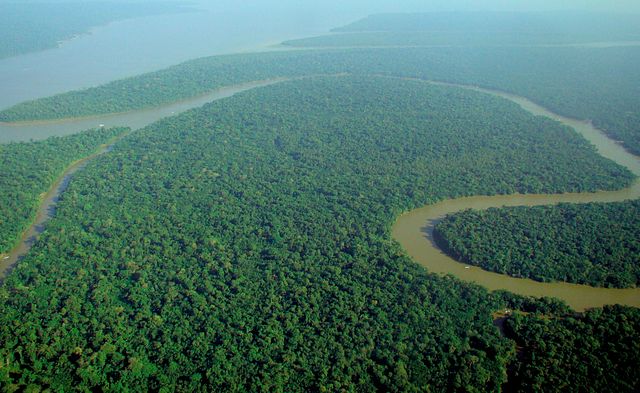Breaking
Amazon boat trips beckon World Cup visitors
MANAUS, Brazil — Light plays off the Solimoes River, duplicating the verdant canopy of the Amazon rainforest on the water’s surface.
The landscape that glides by the Almirante Barbosa is breathtaking, but almost no one aboard the boat pays attention. Nearly all the passengers doze in dozens of hammocks strung from the boat’s rafters, lulled to sleep by the rocking motion, the motor’s chugging, and the tropical swelter.
Boats like the Almirante Barbosa are the lifeline of Brazil’s Amazon region, carrying passengers and staple goods ranging from rice to diapers to remote riverside villages inaccessible any other way.
They’re also a great way for World Cup fans in the remote Amazon city of Manaus to make a quick jungle escape between matches.
The lumbering wooden vessels are slow going – the Almirante Barbosa chugs at some 20 kilometers (12 miles) an hour – and trips can stretch out for days or even weeks.
While most tourists opt for speedboats for their jungle journeys, a riverboat day trip can give even World Cup visitors on a tight schedule a taste of authentic Amazonian life.
Carved out of the heart of the world’s largest forest where the onyx waters of the Rio Negro and milky tea-hued Solimoes meet to form the immense Amazon, Manaus is host to four matches, including the game between Cameroon and Croatia on Wednesday.
Dozens of boats set sail from Manaus daily for destinations such as Belem, about 1,300 kilometers (800 miles) to the east, or to Sao Gabriel da Cachoiera, 860 kilometers (530 miles) to the west, along the Rio Negro’s headwaters near Brazil’s border with Colombia.
Around the port, hustlers with loudspeakers announce their vessels’ destinations and the various stops they will make along the way. Laborers wearing hats that look like Turkish fezzes jostle up and down the docks with giant loads atop their heads, the hats’ flat surfaces helping balance impressive loads – sacks of beans and sugar, giant bunches of bananas, six-packs of beer.
Manacapuru, about 79 kilometers (49 miles) up the Solimoes from Manaus, is among the best destinations for an easy day trip – and a ticket that’s just $11. There’s not much to see in the town itself, but the six-hour voyage is stunning.
Plus, Manacapuru is among a few destinations easily accessible by car, and a $65 cab ride gets day-trippers back to the city in an hour.
Potential travelers would be wise to board well ahead of the scheduled departure and bring a hammock. Stalls in Manaus’ Adolpho Lisboa market in front of the port, and a row of shops behind the market, have hammocks for every budget, from $5 to $100-plus.
Travelers without hammocks will have a hard time finding a place to sit on the boat, and competition for on-board real estate can be fierce. On the often-overcrowded vessels, hammocks are hung from the overhead wooden beams and stacked two- or even three-high bunk bed-style, with adults on the lower levels and kids above.
Food is included in the ticket price, but gastronomical variety is not: Every day, there’s bread and coffee for breakfast, followed by chicken, rice and white noodles for lunch and dinner. The only other food available is fare like cookies and chips at the boat’s snack bar.
As dusk falls, the collective midday stupor lifts and the passengers gather at the railings to watch the sunset play on the water and the floating houses, bars and general stores of the riverside communities slip past. The men sip on cold beers as the women gossip and chase after toddlers. Fussing babies are breast-fed and rocked back to sleep by the gentle back and forth of the ship.
“I’ve been making this trip every two months for three years, and I have the choice: take a speedboat that gets me to where I’m going in four hours, or spend 18 hours on a riverboat,” said Marina Vieira, a 28-year-old biologist conducting field research in a remote community up the Solimoes.
“I always, always take the riverboat.”






















